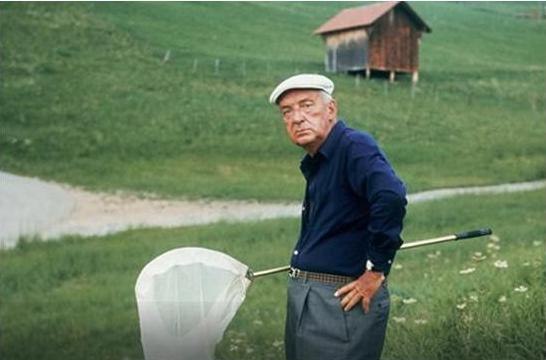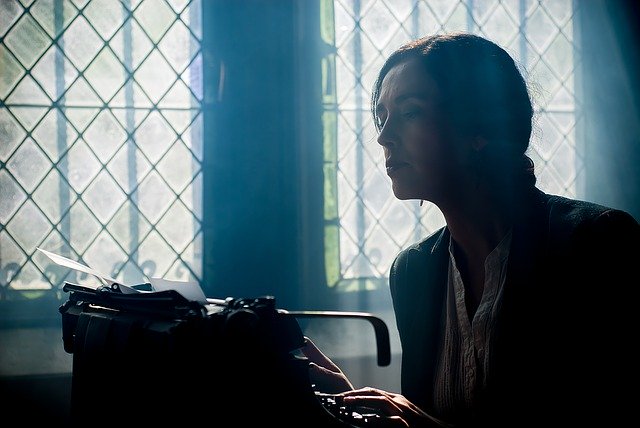Ten Authors Who Had Wildly Different Day Jobs
It’s commonly thought that professional writers do nothing but sit at their desks all day and write while they’re fueled by coffee, alcohol, and angst. In reality, most authors – no matter how successful—have or had day jobs to pay the bills. Here’s a list of ten famous writers who had jobs crazier than writing.

Vladimir Nabokov was a Butterfly Expert
Most know Nabokov for writing intellectually ambitious and linguistically lucid novels about things like poetry, professional jealousy, and inappropriate sexual relationships, but some know him as an art curator who specialized in butterflies. That’s right, Nabokov was actually a pretty talented scientist and curator. He even developed theories on the evolution of the butterflies he studied. Unfortunately, the brilliancy of his butterfly related endeavors wasn’t really acknowledged until recently, far after his death.

Kurt Vonnegut Sold Cars
Vonnegut, a prolific author most well known for Cat’s Cradle and Slaughterhouse-Five, worked at a Saab car dealership in 1957 in a town on Cape Cod. This was in his early adulthood, before his writing career had taken off. Vonnegut had previously seen more than his fair share of misery, having been drafted into the army and imprisoned during World War II. To make matters worse for young Vonnegut, the dealership failed within a year. So it goes.

Arthur Conan Doyle was a real life crime investigator and doctor
He had to get his inspiration somewhere! Doyle wasn’t just a genius, he was also a passionate defender of justice. He personally examined two closed cases and cleared the names of two men who were previously convicted. Apparently a personality type-A, he also earned a medical degree, and worked as a surgeon and an ophthalmologist. Doyle seems like he was the kind of show-offy, know-it-all kid everyone would hate in class…or a lot like Sherlock, in other words.

James Joyce was a musician
If you’ve read much of Joyce’s work, especially Ulysses, you'll know that music was important to the author. His work makes frequent allusions to traditional Irish songs and was sometimes inspired by opera. But Joyce wasn’t just interested in music; he was actually an extremely talented singer and piano player. He even considered music as a long-term career for a time.

George Orwell was an Indian Imperial Police Officer
Though Orwell had pursued literary ambitions when he was young, and published his first poem when he was 11, his first real job was in the Indian Imperial Police Force. Young Orwell’s family couldn’t pay for a college education, so he had to put the whole opposition-to-oppressive-government thing on the back burner while he was stationed in Burma. Later, Orwell moved back to England and took up small jobs like dishwashing to make ends meet.
 Robert Frost worked in a light bulb factory
Robert Frost worked in a light bulb factory
Frost actually had a number of jobs before he started getting his poetry published. After college, he worked as a newspaper delivery boy. He quit shortly (too many miles to go before he slept?), and worked as a teaching assistant. Eventually he took a job maintaining carbon arc lamps, and it was while he was working at the light bulb factory that he published his first poem “My Butterfly. An Elegy.” He should talk to Nabokov!

JD Salinger worked on a luxury cruise line
Apparently, in 1941, Salinger worked as the activities director for a Caribbean cruise line. This was ten years before the publication of The Catcher in the Rye. In fact, Salinger was only 22. During the year that he was working for the cruise line Salinger began submitting stories and getting published in The New Yorker, and he also started dating Oona O’Niell (who later dumped him for Charlie Chaplin).

John Steinbeck gave tours at a fish hatchery
Many of Steinbeck’s characters are hardworking men who do physically laborious jobs for little pay, and his gig at a fish hatchery in California sounds like something out of one of his novels. His responsibilities included breeding, feeding, and cleaning the fish—i.e., physical labor—and all for—you guessed it—little pay. He also gave tours of the hatchery, which is actually where he ended up meeting his wife, Carol Henning.

Charles Dickens worked in a factory as a child
As with Steinbeck, this day job isn't so hard to believe, considering many of Dickens’s characters are young boys facing similar circumstances. But the working conditions Dickens faced really were crazy. He was sent to live alone and work at a shoe blacking factory—just days after he turned 12 years old—as a futile attempt by the family to make enough money to keep Dickens’s father out of jail, as he was unable to repay a debt he owed. Clearly, this unfortunate experience stayed with him for years to come.

Lewis Carroll taught at a church
Not only that, but Carroll published several books about logic and math before he even wrote any fiction. It’s hard to believe that the same mind behind the imaginative “Alice in Wonderland” was also a talented and extremely prolific mathematician, but that he was. He also happened to be extremely religious, and he taught at a Christian church for most of his adult life.



